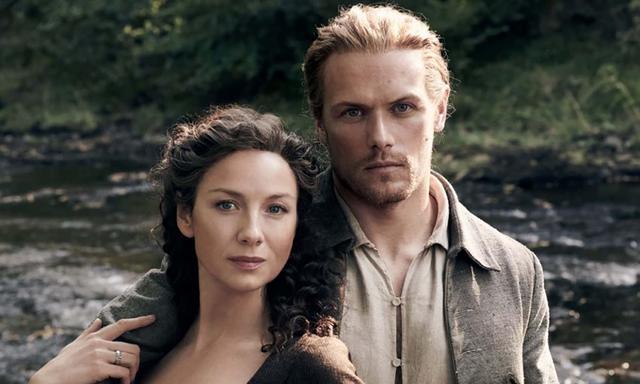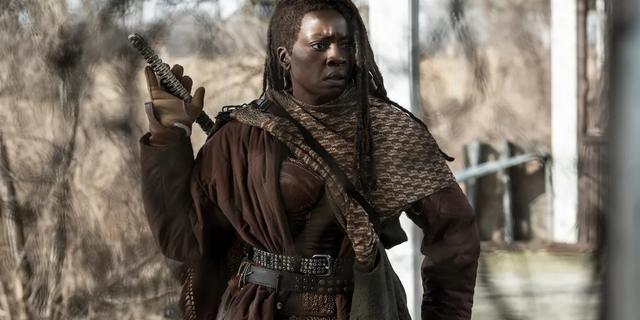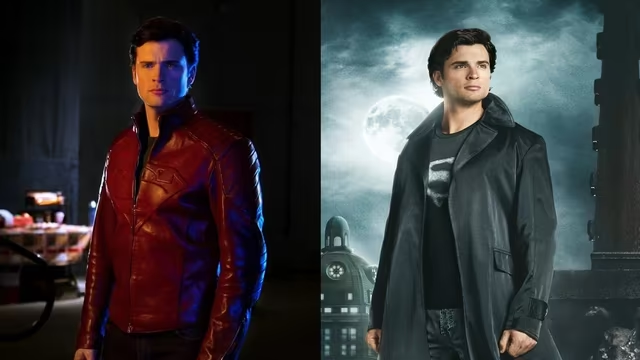If you click on a link and make a purchase we may receive a small commission. Read our editorial policy.
I am dismayed to inform you that I am losing my mind over a Star Wars: Andor Easter Egg
Yes, Star Wars: Andor has some Easter Eggs, but one of them stands out

If you’re reading this article, then I’m probably like you, in that I’ve been a Star Wars fan for practically as long as I can remember. And yet, I never really thought of myself as one of THOSE Star Wars fans. You know the kind I’m talking about. The ones that get psyched up when they see that The Mandalorian is wielding the rifle from the 1978 Star Wars Holiday Special. The ones who sound an air horn when a character intones, “I’ve got a bad feeling about this.” The ones who saw the blue Twi’lek Jedi Aayla Secura show up in Star Wars Episode II: Attack of the Clones, and whispered in reverie under their breath, 'It all really counts. It all matters.'
To me, despite George Lucas saying of the series’ revisitation of themes and settings that “It’s like poetry; it rhymes,” cross references and callbacks have never really been what Star Wars was about. As a kid, Star Wars was about new aliens and spaceships and superpowers which dazzled you with the possibility of a setting you could never fully know, the challenge of an unlikely few against an incomprehensibly enormous evil, and, while always inevitably bearing a heavy cost, the triumph of hope against all odds. I’m not interested in knowing how Han Solo got his lucky dashboard dice. What I want from Star Wars is what it did for me when my dad took me to see the 20th anniversary theatrical revival for the first time in 1997: I want to see something I’ve never seen before.
Or, at any rate, that’s what I’ve always told myself.

The egg that cracked me.
Andor showrunner Tony Gilroy has repeatedly stated that Andor is not a show of Easter Eggs and fanservice. It’s about telling an original story in the Star Wars universe about the unrelenting bureaucratic tyranny, the consequences it leaves in its wake, and the resistance which will always rise against it. In other words, if you’re going into this Rogue One prequel looking for the next Baby Yoda, you’re going to be disappointed.
After the three episode premiere last week, I believed him. Andor is entirely its own animal, coarser and more raw than we’ve ever seen Star Wars before. Cassian is in many ways Star Wars’ first truly adult protagonist, surrounded by sex and swearing and adult relationships and, most importantly, the mundane obligations of persistence under a regime designed to crush your spirit.
This week, it seems we’ve entered the series’ second act. We know our principal players, and it’s time for them to start making moves. Andor follows his mysterious contact, the artifact dealer Luthen, to a world where he’s to make contact with others who wish to do something about their galaxy in shackles. As an artifact dealer, Luthen’s shop provides a lot of opportunities for Easter Eggs. We see a piece of Jedi Master Plo Koon’s methane breath mask. We spot a Twi’lek kalikkori, a deeply personal family artifact pivotal to the final season of the animated series Star Wars: Rebels. There’s Mandalorian armor, Jedi and Sith holocrons, even a suit which bears a striking resemblance to the video game protagonist from the 2008 video game Star Wars: The Force Unleashed. All pleasing to Star Wars reference hunters, but easily dismissed as little more than cute references. Window dressing. Treats for the fans waiting to be acknowledged that, yes, this is still Star Wars, and all the things you love are things we love too.

As Luthen sends Andor off to meet with his contacts in the nascent Rebellion, he loans our hero an artifact to prove his bona fides. It’s a crystal pendant, easily identifiable as a kyber crystal – the power source of a lightsaber. But then, Luthen explains, as little more than an aside, its deeper significance.
"It's a Kuati signet,” Luthen says. “Blue kyber. Skystone. The ancient world. Celebrates the uprising against the Rakatan invaders."
In an instant, my hair turned white. I had a full beard. I was clad in a brown robe caked with sand. And as I opened my mouth, I heard the voice of Alec Guinness say: “Now THAT’S a name I haven’t heard in a long time.”
Let me explain.
Thousands of Star Wars stories have been told since Luke Skywalker looked out over the twin suns of Tatooine in 1977. In terms of quality, Star Wars immediately topped itself with its sequel, The Empire Strikes Back, and then arguably never again. Except once.
The early 2000s were a tumultuous time for Star Wars. We were smack in the middle of the Prequel Trilogy, which nobody but maybe Pablo Hidalgo knew exactly how it would play out. So when it fell to future Mass Effect and Dragon Age developers BioWare to deliver an ambitious, sprawling Star Wars role-playing game, they elected to avoid the problem of telling a story that could contradict the reality of Star Wars which could change at any moment by instead setting it even further in the past. The very, very past. Try 4,000 years. This was Star Wars: Knights of the Old Republic.

Knights of the Old Republic (or, ‘KOTOR’) was the untold story of an ancient Sith Lord who nearly conquered the Galaxy through the employ of an even more ancient empire’s secret weapon: the Star Forge. What the Star Forge does isn’t important to our current discussion– I highly encourage you to play the game in one of its many recent computer and console ports to find out for yourself (or, wait for the remake… whenever that’s happening). What is important is where the Star Forge is: the ancient world of Rakata-Prime, once the seat of a mighty, galaxy-wide empire.
In KOTOR, we learn that the fishlike Rakatans were responsible for many of the elements of Star Wars which we take for granted. The ubiquity of hyperspace travel. The presence of humans on practically all civilized worlds. The way most species in the galaxy have adopted a common ‘Basic’ language. The great melting pot of the Star Wars Galaxy was the colonization of the Rakatan ‘Infinite Empire’ tens of thousands of years before even KOTOR itself, before a disease wiped nearly all of them out and only the peoples they once enslaved remained. Rarely mentioned since this game, the Rakatan Empire provided the secret key to the origin of Star Wars as we know it today. The closely guarded knowledge of how the story all truly began was your reward for completing the game.
'It all really counts. Everything matters.'
In 2012, Disney bought Lucasfilm and soon after simplified Star Wars continuity by striking all material deemed extra-curricular from the record. KOTOR was one of the many casualties, once more clearing a storytelling slate for Star Wars’ distant past. But as Star Wars has continued to develop in the Disney Era, fan favorite concepts from decommissioned material have begun creeping back into the fold. The most infamous of these is Grand Admiral Thrawn, once the big bad Imperial villain of the Post-Return of the Jedi Thrawn trilogy, now recast as an adversary to Ahsoka Tano and the crew of the Ghost in Star Wars: Rebels. Others, like Palpatine’s clone backup bodies in the Dark Empire saga, and the nature of the Dark Side explained in the Darh Bane novels which allows a master’s spirit to live on inside of their murderous apprentice, snuck their way into The Rise of Skywalker.
But for a very particular sort of fan like me, someone who in the early 2000s was looking for an experience which would let you live inside the Star Wars galaxy, explore its hidden mysteries, and make friends with an unforgettable cast of characters while experiencing the only plot twist in Star Wars to rival The Empire Strikes Back in its elegance and grandeur (if you have not played the game yet, DO NOT spoil yourself), this two word phrase in a tossed off line in the middle of a Star Wars TV show- “Rakatan invaders”- represents something special. It’s a hidden history of the entire galaxy reacknowledged, a secret you once kept reaffirmed.

This week, Andor taught me that I am, indeed, one of THOSE Star Wars fans. Or to put it in wrestling terms, I am The Mark. But maybe all of us are, about something. Every one of us has a story that’s special to us, or a character, or just an idea, even in the context of a larger group of stories. Maybe ‘fanservice’ is only a bad word when you’re not the fan being serviced. There are some who engage with legacy media like Star Wars by gleefully rounding up all the Easter Eggs in every episode. It’s not a mindset I completely understand. But when Star Wars reminds me of the pieces of that larger, longer story which drew me in, and that the knowledge I’ve obtained of it over decades continues to color its world in even small ways, even callbacks can make the world seem bigger.
Those grand themes I talked about Star Wars being about are still true. But Star Wars is about more than that, and less. As early as the making of the original film, George Lucas envisioned Star Wars as a playground where his favorite writers and directors could tell their own stories in his world. It could be as high concept, or as strange, or even as commercial as you wanted it to be. (Ever heard of an Ewok?) The only truth is that the appeal of Star Wars is whatever joy you find in it.
There’s no such thing as THOSE Star Wars fans. They are us.
Disney+'s Andor features the first onscreen use of Star Wars' BBY/ABY timeline. Let's dive into that.
Follow Popverse for upcoming event coverage and news
Find out how we conduct our review by reading our review policy
Let Popverse be your tour guide through the wilderness of pop culture
Sign in and let us help you find your new favorite thing.
















Comments
Want to join the discussion? Please activate your account first.
Visit Reedpop ID if you need to resend the confirmation email.